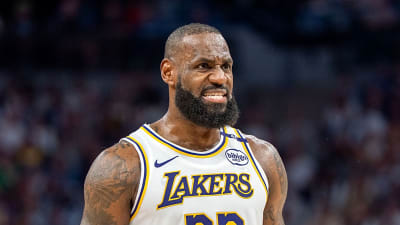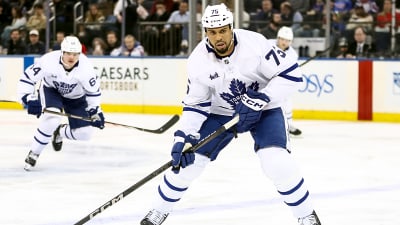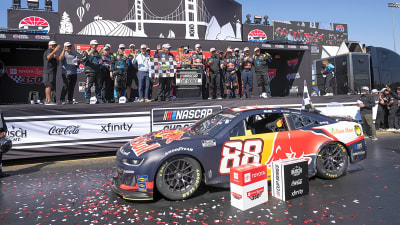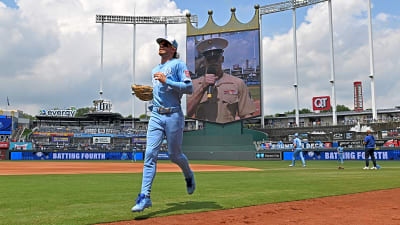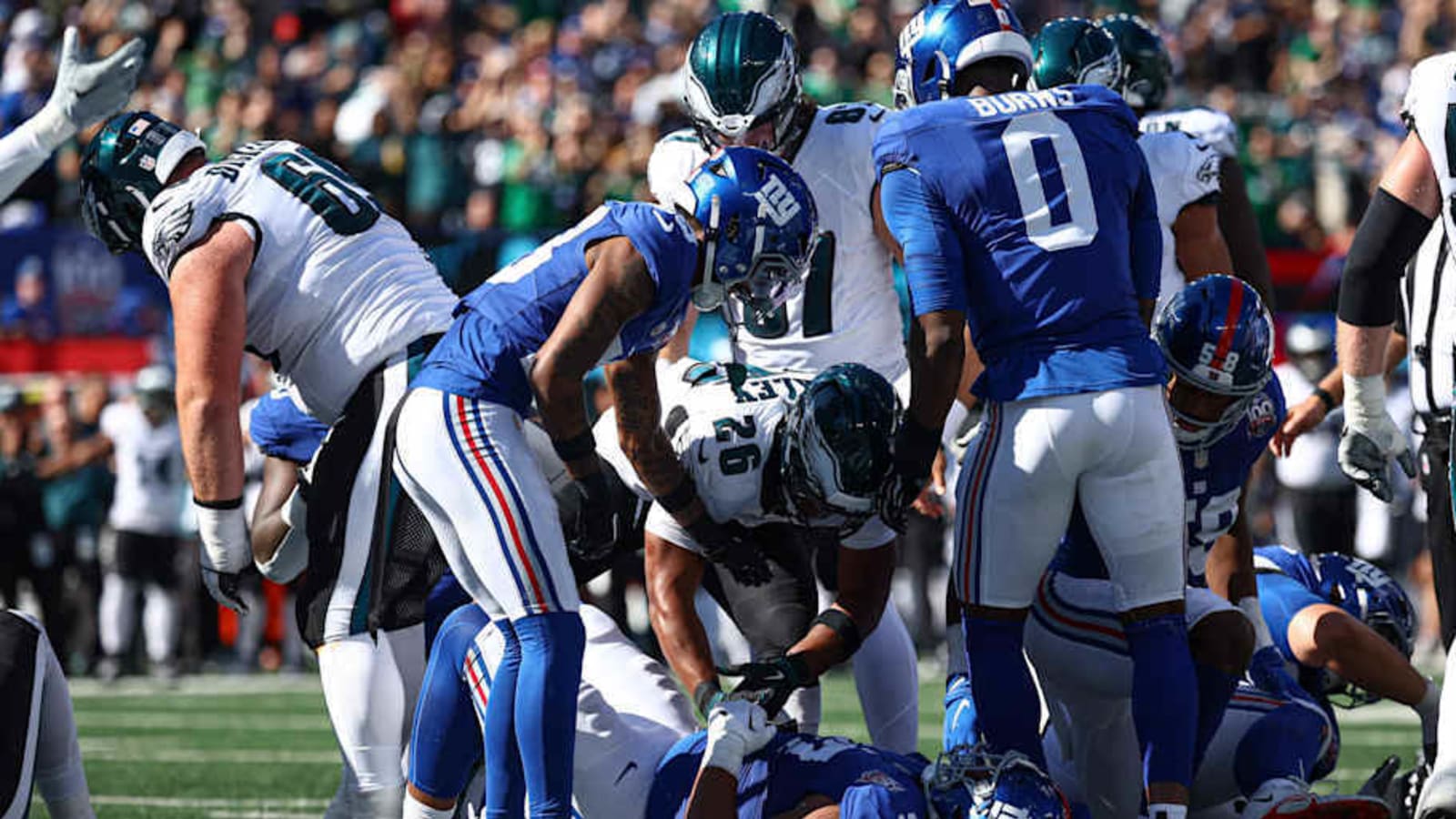
The New York Giants run defense has had its share of struggles over the past few seasons. That’s seemingly hard to fathom, considering the Giants have one of, if not the best, run-stuffing defensive tackles in the league, Dexter Lawrence II, anchoring the middle of that defense.
Yet this season, the Giants’ run defense, with Lawrence in the lineup, has allowed opponents an average of 145.8 yards per game. Two teams, Washington in Week 2 (215 yards) and Philadelphia in Week 7 (269 yards), have topped the 200-yard mark.
But then something unexpected happened after the Giants lost Lawrence to a dislocated elbow for the season.
Top NFL rushers such as Alvin Kamara of the Saints, Derrick Henry of the Ravens, and Bijan Robinson of the Falcons, were all held to under 100 yards rushing against the Giants, who, since losing Lawrence to injury, saw the average rushing yards per game against them drop to 129.6.
Before going any further, this is not to suggest that the Giants’ run defense is better without Lawrence in the lineup.
It is not.
So why has the Giants' run defense been better of late despite all the injuries that, in addition to Lawrence, have also cost key run defense staples such as defensive linemen Rakeem Nunez-Roches, D.J. Davidson, Armon Watts, and inside linebacker Bobby Okereke games?
" I think the guys are playing hard. I think they're battling up front; they're fighting. I think the backers are doing a good job to get downhill. They're effective, I think tackling has been improved in some areas, especially from the back end moving forward here," defensive coordinator Shane Bowen told reporters on Thursday.
"Just really haven't seen the really big ones. So, we've been able to do a good job of eliminating the really big ones. Where those, there might be a 10-to-12-yard gain here and there. But it's not turning to 40, so it's been a big part of it."
Digging a little deeper though into the improvement, the answer lies with an adjustment Bowen made once the team lost Lawrence in Week 13: The Giants have deployed more four-man fronts.
According to Sports Info Solutions (SIS), when the Giants had Lawrence in the lineup, their most frequently used defensive formation against the run was a 2-4-5, which they ran 52% of the time. That was followed by a 3-3-5, which they deployed 46% of the time.
Once the Giants lost Lawrence to his season-ending elbow injury, Bowen began to deploy more four-man fronts against the run. This helped the makeshift run defense to hold up against Kamara, Henry, and Robinson.
From Weeks 14-16, the Giants ran a 4-3-4 on 65% of their running plays, their most frequently used personnel grouping against the run. Meanwhile, their 2-4-5 alignment was used on just four out of 83 total running plays against them in that three-week span.
This all raises the question of why Bowen didn’t switch to a 4-3-4 earlier in the season.
The likely answer is Lawrence.
“Dexter Lawrence does things differently than a typical defensive tackle because he does his job and more on every play,” former Giants linebacker Jonathan Casillas told the Locked On Giants podcast.
Casillas explained that linebackers playing behind Lawrence might be assigned to cover one of the A-gaps or the B-gap against the run. Because Lawrence is so multitalented and has shown that he can handle multiple gaps on any given play, that sometimes leaves the players alongside him and behind him having to adjust on the fly.
That, Casillas said, is not as easy as it sounds.
“No one can really teach you that until you get out there with the guy like Dexter Lawrence, and you're like, ‘Okay, so if he does that on this play, then I can hit this gap. That's not my gap, but it'll be there because Dexter's taking up two gaps.’ That takes repetition.”
While Casillas acknowledges that injuries to the Giants' defense have been a factor, he also believes that if Bowen is retained, the players will be far more comfortable in Year 2 of the system than they might have been this year.
To prove his point, Casillas spoke of 2015 when, as a member of the Giants, the defensive coordinator that year was Steve Spagnulolo, back for a second stint as defensive coordinator.
However, unlike Spagnuolo’s first stint as Giants defensive coordinator (2007-2008), when the defense finished seventh and fifth in those two seasons, the Giants defense finished 32nd in the league (420.3 yards allowed per game) in 2015.
The following year, with players more comfortable in the system and more on autopilot, the Giants' defense rose in the rankings, finishing tenth overall (339.7 yards allowed per game).
“The system can work, but you got to have the right guys in there,” Casillas said. “That might not be the case in the first year under Shane Bowen's leadership, so you can't give up on it quite yet.”
More Giants Coverage
New York Giants On SI Social Media
More must-reads:
- First-round draft pick Jahdae Barron finally inks rookie deal with Broncos
- Cowboys' Micah Parsons makes big guarantee about contract extension
- The 'Total touchdown leaders by NFL season since 2000' quiz
Breaking News
Trending News
Customize Your Newsletter
 +
+
Get the latest news and rumors, customized to your favorite sports and teams. Emailed daily. Always free!
